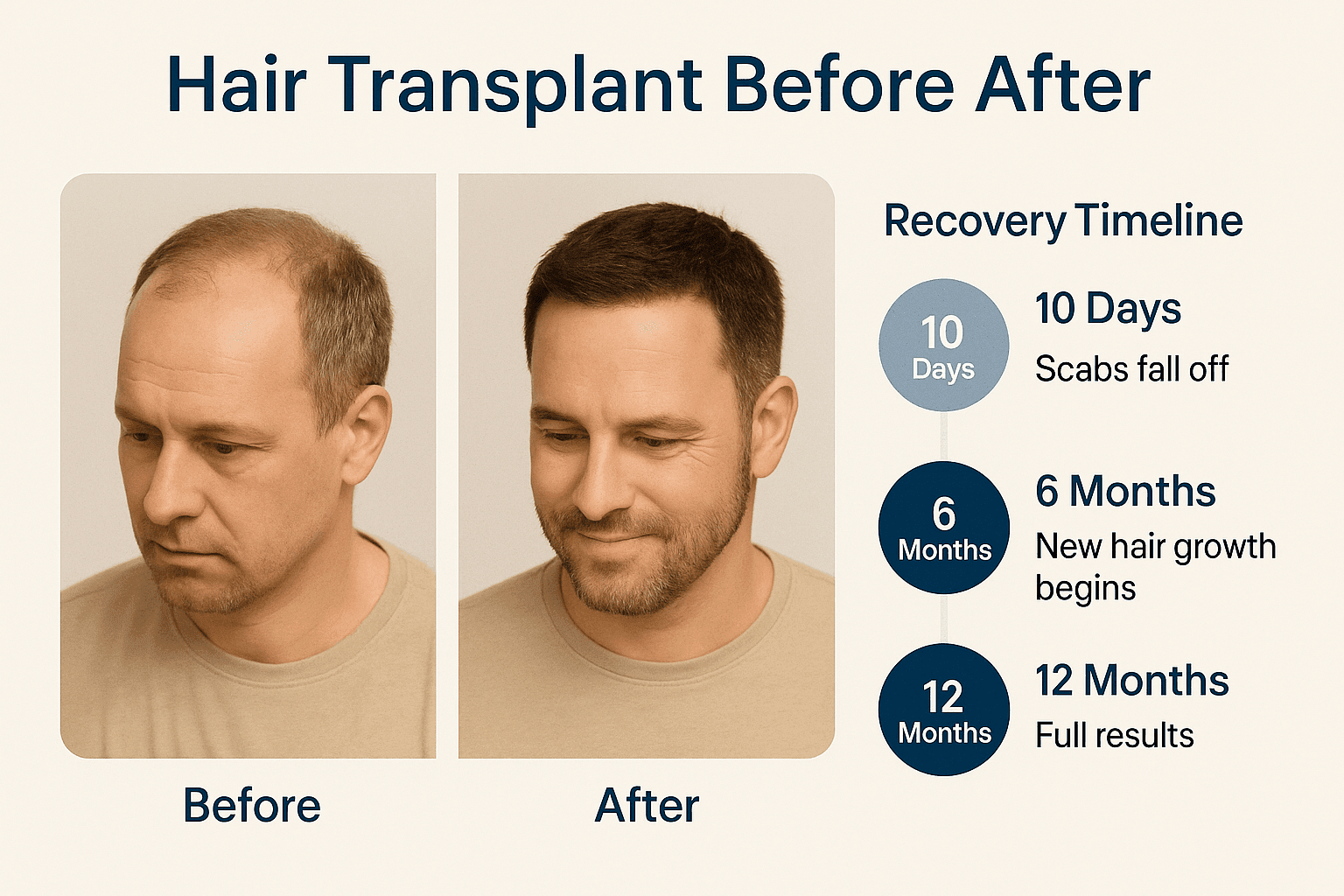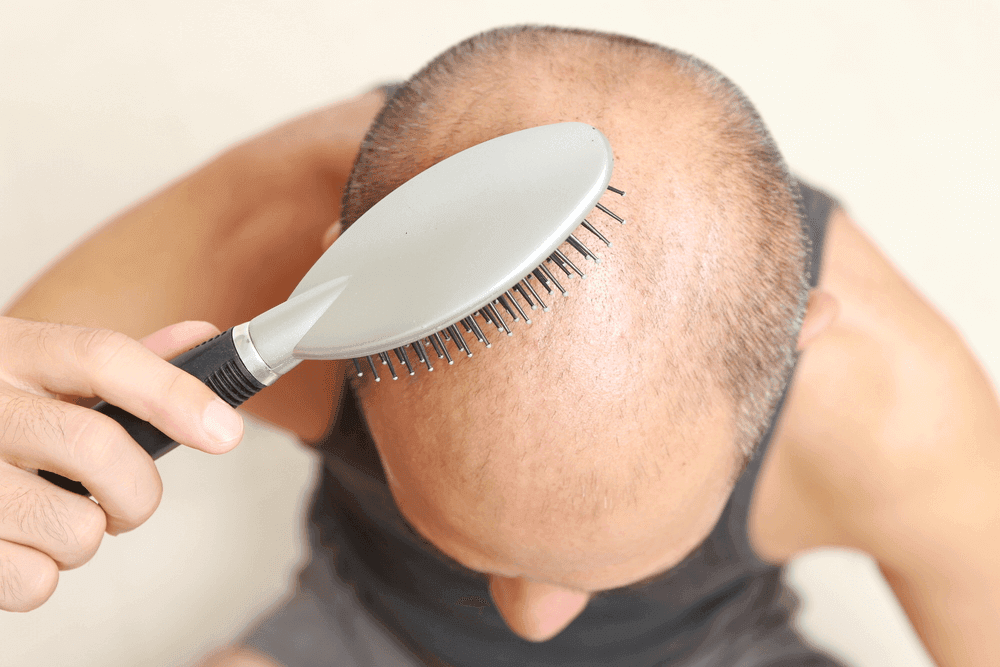Hair Transplant Before After: What to Expect, Timeline, and Realistic Results
When people think about hair transplantation, they usually picture the Hair Transplant Before After journey and the final look. This guide explains how we evaluate active vs. passive hair loss, how we plan candidacy and timing, what the recovery looks like in the first 10 days, and when you can expect visible change. You’ll also find practical pre- and post-op tips and a link to our verified Hair Transplant Before After gallery on Instagram for real-world examples.

Before: Active vs Passive Hair Loss
Prior to surgery, patients typically face thinning from genetic (androgenetic) alopecia. We distinguish between active and passive phases. In the passive phase, shedding slows and the boundaries of baldness stabilize—often seen in later 30s—making the Hair Transplant Before After outcome more predictable. In the active phase, thinning continues and borders expand; transplantation does not halt that process, so we combine surgery with medical therapy and plan zones conservatively. Clear, well-defined recessions are better candidates for immediate grafting, while diffuse crown/mid-scalp thinning usually benefits from stabilization first.
Planning Your Hair Transplant
In active loss, ≥50% thinning in a defined area can justify grafting, especially for the frontal hairline where framing the face yields a strong cosmetic impact. Crown and mid-scalp density are often deferred until passive stabilization. In some cases, a staged plan delivers the most natural Hair Transplant Before After progression: strengthen the front first, then refine the crown once borders settle. We review medical history, medications, lifestyle factors, and donor capacity to match expectations with achievable density.
After: Early Recovery and 10-Day Milestones
Hair transplantation is surgery; plan a week off for optimal rest. Transient swelling, tenderness, and itch can occur but are manageable. With Micro-FUE, donor pinpoints close within 24–48 hours. In the recipient, tiny scabs detach with medical washes by day ~10, leaving a “number-1 cut” look. At this stage, most patients resume light activity (walking, desk work) and can gradually increase exercise per guidance. Avoid machine shaving on the recipient for 3 months; the donor is commonly fine to clipper from day 15.
Shock Loss and Regrowth Timeline
Temporary shedding (“shock loss”) can affect native hairs around the grafts—not the transplanted grafts themselves. Supportive care plus medical therapy helps minimize it. New growth from grafts typically starts at month 3–4, with visible thickening at 6 months and near-final Hair Transplant Before After density by month 12 (and continued maturation of texture thereafter). Individual timelines vary with age, nutrition, sleep, stress, and adherence to aftercare.
Practical Tips Before & After
- Block out ~10 days for recovery; postpone travel if possible.
- Use front-zip clothing to avoid friction on grafts; prepare disposable pillow covers/sheets.
- Avoid alcohol/smoking peri-operatively; confirm all regular meds with your physician.
- Keep sodium modest to limit swelling; prioritize protein and hydration.
- If you work in hot/dusty areas, plan temporary adjustments during healing.
- If you have diabetes or gastritis, optimize control and timing with your doctor before surgery.
See Real Hair Transplant Before After Photos
We share recent, unfiltered cases—including 10th-day photos and recovery clips—on Instagram. For authentic Hair Transplant Before After results across different patterns and hair types, visit our official page:
@clinista_official.
Have questions about candidacy, graft numbers, or staging? Start with a medical assessment and tailored plan. Explore our hair loss treatments, learn more about FUE hair transplant, or contact us to book a consultation.
For patient-friendly overviews of diagnosis and therapy options, see the American Academy of Dermatology hair loss resource.
Frequently Asked Questions
-When will I see visible Hair Transplant Before After changes?
Early stubble appears in weeks, initial growth at months 3–4, and meaningful cosmetic change by month 6. Most patients assess their near-final result around month 12.
-Does a transplant stop ongoing hair loss?
No. Transplanted hairs are permanent, but native hairs can keep miniaturizing. We often pair surgery with medical therapy to stabilize surrounding areas and protect the long-term look.
-Is shaving allowed after surgery?
Avoid machine shaving of the recipient for 3 months to protect grafts. Donor can usually be clipped from day 15, following your surgeon’s instructions.







